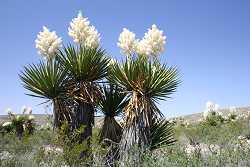West Texas is a botanical treasure trove, particularly for cactus enthusiasts. This region, characterized by arid landscapes, dramatic mountain ranges, and sandy soils, is home to an extraordinary diversity of cacti. But have you ever wondered what makes these resilient plants so fascinating? What challenges do they face in their arid habitats that contribute to their unique adaptations? This exploration will delve into the distinctive characteristics, varieties, and the ecological significance of the cacti from West Texas.
West Texas serves as a natural laboratory for understanding how life can thrive in harsh conditions. The cacti here exhibit an array of physical and behavioral adaptations that enable them to survive extreme temperatures and water scarcity. From their thickened epidermis to specialized photosynthetic pathways, let’s discover the remarkable features that set these cacti apart.
Understanding the parched landscape is essential to appreciating the adaptations of West Texas cacti. The arid climate provides minimal precipitation, often below 10 inches per year, which presents a stringent challenge for plant life. In response, cacti have developed a suite of remarkable traits designed to optimize water retention and minimize loss.
One of the key adaptations observed in cacti is the thick, waxy skin—or cuticle—that covers their exterior. This barrier significantly reduces water loss due to evaporation. Moreover, many species have a unique stomatal behavior: they open their pores at night when temperatures are cooler and humidity is higher. This process, known as crassulacean acid metabolism (CAM), allows them to capture carbon dioxide without losing precious moisture during the scorching daytime hours.
Partners in nature’s dance, the soil composition in West Texas also plays a pivotal role in the survival strategies of cacti. The alkaline soils, rich in minerals but often low in organic matter, challenge plant life to refine its water conservation techniques. As a result, cacti have evolved extensive root systems, ranging from shallow and spread-out to deep and taproot-like, to maximize water uptake from the sparse rainfall.
Now, let’s dive into some notable types of cacti that pepper the West Texas landscape. Each species presents its own charm and adaptation story, contributing to the tapestry of this extraordinary ecosystem.
Behold, the majestic Saguaro cactus (Carnegiea gigantea). Towering majestically, the Saguaro is a charismatic icon of the American Southwest. This species can reach heights of up to 40 feet and live for over 150 years. Its arm-like extensions, which sprout after 50-70 years, not only add to its striking silhouette but also increase its ability to gather sunlight for photosynthesis.
Another marvel is the Texas Prickly Pear (Opuntia engelmannii). Renowned for its edible pads and vibrant flowers, the Texas Prickly Pear provides sustenance for both wildlife and humans alike. Its flat, paddle-shaped pads store water efficiently during droughts, and the beautiful blossoms attract bees, hummingbirds, and other pollinators.
The Navajo Cactus (Pediocactus) is less well-known yet no less fascinating. This small, barrel-shaped cactus is often covered in dense spines that resemble fur, providing protection from herbivores while also offering a unique aesthetic appeal. It survives in some of the most inhospitable conditions, showcasing nature’s incredible adaptability.
Then, there’s the claret cup cactus (Echinocereus triglochidiatus), celebrated for its astonishingly vibrant red blooms. These flowers emerge as early as April and can last until fall, forming a striking contrast against the muted landscape. A key aspect of the claret cup’s survival is its ability to thrive in rocky terrains where other plants struggle to establish roots.
Beyond individual species, it’s vital to consider the overarching ecological roles these cacti play. As keystone species, they provide critical resources for wildlife. Birds, insects, and mammals all rely on the flowers, fruits, and pads of cacti for sustenance. The ability of cacti to store water creates microhabitats, fostering biodiversity in the arid region.
However, despite their resilience, West Texas cacti face numerous perils. Climate change poses a grave threat as temperatures rise and precipitation patterns shift. Additionally, urban development encroaches on their natural habitats, leading to habitat destruction and fragmentation. Conservation efforts must be emphasized to ensure the survival of these extraordinary plants and the ecosystems they support.
In conclusion, the cacti of West Texas represent a compelling intersection of beauty, resilience, and ecological significance. Their remarkable adaptations enable them to flourish in a seemingly inhospitable world, offering a glimpse into the intricate relationships between flora, fauna, and the environment. Exploring the diverse species that thrive in this region invites one to ponder: how can we, as stewards of the earth, contribute to the preservation of such unique natural wonders? The challenge is clear—understanding and protecting these exquisite cacti may well be the key to sustaining a vibrant landscape in the face of change.





Leave a Comment